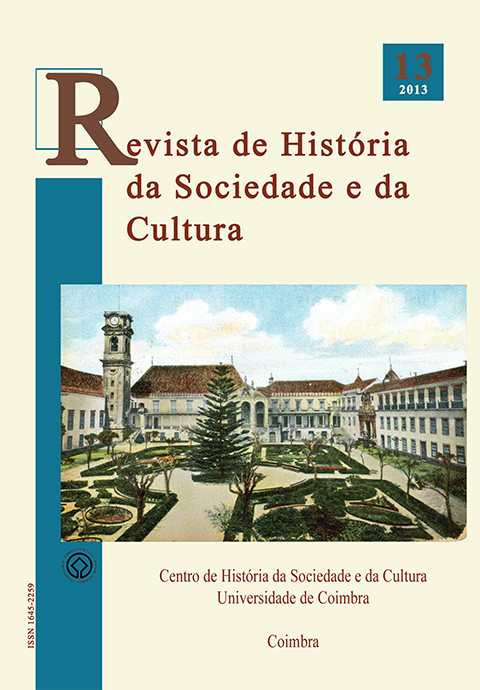Marcos de referência e topónimos da cidade medieval portuguesa: o exemplo de Coimbra nos séculos XIV e XV
DOI:
https://doi.org/10.14195/1645-2259_13_6Palabras clave:
Cidade medieval portuguesa, Coimbra, Paisagem urbana, ToponímiaResumen
Com este artigo, pretende-se reflectir acerca da toponímia da cidade da Baixa Idade Média portuguesa, a partir do estudo mais detalhado da realidade de Coimbra, nos séculos XIV e XV. Assente num corpo documental constituído por documentos de produção eclesiástica, régia e concelhia, cronologicamente balizado entre o século XIV e os inícios de Quinhentos, este trabalho procura identificar os principais marcos de referência topográfica, naturais ou artificiais, que se impunham na paisagem urbana. Do mesmo modo, pretende sublinhar a forma como a toponímia medieval nos dá eco das populações que animavam a urbe nos séculos que estudamos, mas também dos povos que, protagonistas de ocupações anteriores, deixaram, até bem tarde, um cunho diferenciador no urbanismo de Coimbra. Finalmente, este estudo ambiciona uma melhor compreensão da relação que se estabelecia entre o habitante citadino e o espaço urbano. Para uma melhor articulação destas questões, o artigo divide-se em quatro temas evidenciados pela toponímia em análise: edifícios e construções urbanas; paisagem e características naturais; actividades artesanais e comerciais e outras profissões; minorias religiosas e estrangeiras.
Descargas
Descargas
Publicado
Número
Sección
Licencia

Esta obra está bajo una licencia internacional Creative Commons Atribución 4.0.
Los autores conservan los derechos de autor y conceden a la revista el derecho de primera publicación, estando el trabajo simultáneamente bajo la Licencia de Atribución de Creative Commons que permite compartir el trabajo con el reconocimiento de la autoría y la publicación inicial en esta revista.











